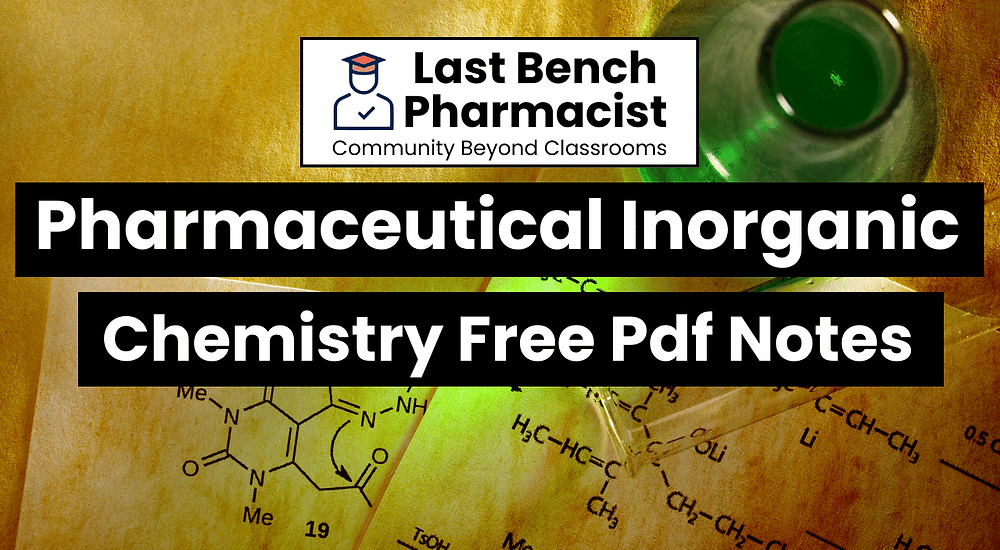



Struggling to decipher the complex world of B.Pharm inorganic chemistry? Feeling overwhelmed by mountains of textbooks and cryptic formulas? Well, fret no more! This post is your gateway to success, offering a treasure trove of free B Pharm Pharmaceutical Inorganic Chemistry Pdf Notes specifically designed to simplify this crucial subject. Ditch the stress and join us on a journey to conquer inorganic chemistry with clarity, confidence, and, most importantly, free resources! So, grab your favorite beverage, open your mind, and prepare to ace those B.Pharm exams!
Impurities in pharmaceutical substances: History of Pharmacopoeia, Sources and types of impurities, principle involved in the limit test for Chloride, Sulphate, Iron, Arsenic, Lead and Heavy metals, modified limit test for Chloride and Sulphate
General methods of preparation, assay for the compounds superscripted with asterisk (*), properties and medicinal uses of inorganic compounds belonging to the following classes
Acids, Bases and Buffers: Buffer equations and buffer capacity in general, buffers in pharmaceutical systems, preparation, stability, buffered isotonic solutions, measurements of tonicity, calculations and methods of adjusting isotonicity.
Major extra and intracellular electrolytes: Functions of major physiological ions, Electrolytes used in the replacement therapy: Sodium chloride*, Potassium chloride, Calcium gluconate* and Oral Rehydration Salt (ORS), Physiological acid base balance.
Dental products: Dentifrices, role of fluoride in the treatment of dental caries, Desensitizing agents, Calcium carbonate, Sodium fluoride, and Zinc eugenol cement.
Gastrointestinal agents
Acidifiers: Ammonium chloride* and Dil. HCl
Antacid: Ideal properties of antacids, combinations of antacids, Sodium Bicarbonate*, Aluminum hydroxide gel, Magnesium hydroxide mixture
Cathartics: Magnesium sulphate, Sodium orthophosphate, Kaolin and Bentonite
Antimicrobials: Mechanism, classification, Potassiu permanganate, Boric acid, Hydrogen peroxide*, Chlorinated lime*, Iodine and its preparations
Miscellaneous compounds
Expectorants: Potassium iodide, Ammonium chloride*.
Emetics: Copper sulphate*, Sodium potassium tartarate
Haematinics: Ferrous sulphate*, Ferrous gluconate
Poison and Antidote: Sodium thiosulphate*, Activated charcoal, Sodium nitrite
Astringents: Zinc Sulphate, Potash Alum
Radiopharmaceuticals:
Radio activity, Measurement of radioactivity, Properties of α, β, γ radiations, Half life, radio isotopes and study of radio isotopes – Sodium iodide I131, Storage conditions, precautions & pharmaceutical application of radioactive substances.